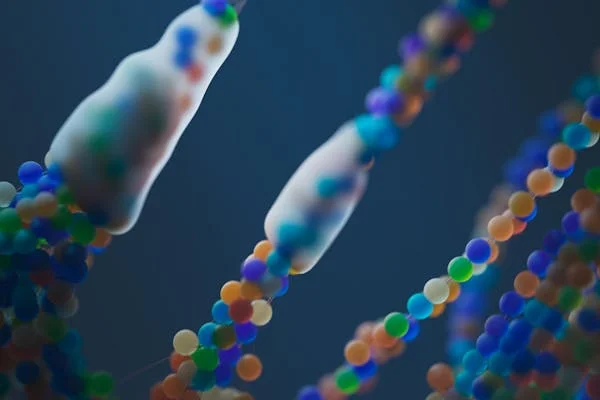DNA testing has made it possible to explore our ancestral roots with incredible depth, and one of the most intriguing aspects of this exploration is analyzing ancient human remains. One such significant sample is the La Braña-Arintero DNA, accessible through Spain GEDmatch 999915 results Kit F999915. This particular sample represents a human who lived approximately 7,000 years ago during the Mesolithic period in Spain, offering insights into the genetic landscape of prehistoric Europe. This article delves into the background, analysis, and significance of the La Braña-Arintero sample found on GEDmatch, offering a deep dive into how this ancient DNA connects us to the past and its importance for modern-day genealogical research.
Understanding Spain GEDmatch 999915 Results and its Role in DNA Research
Before diving into the specifics of the La Braña-Arintero sample, it’s essential to understand the role of Spain GEDmatch 999915 results in genetic research. GEDmatch is a publicly accessible platform that allows users to upload and compare their autosomal DNA results from various testing companies such as AncestryDNA, 23andMe, and FamilyTreeDNA. Researchers also upload ancient and historical DNA samples to GEDmatch, creating a rich database for exploring genetic relationships across different populations.
Why is GEDmatch Important for Ancestry Research?
Spain GEDmatch 999915 results provides a powerful tool for genealogists, anthropologists, and even curious individuals looking to learn more about their genetic heritage. The ability to compare modern DNA with ancient samples, such as the La Braña-Arintero individual, opens up fascinating possibilities. This platform provides:
- Comparative Analysis: Users can compare their DNA to a variety of datasets, including historical, ancient, and regional samples.
- Population Genetics Studies: GEDmatch is used for studying human migrations and genetic differences across regions and periods.
- Genealogical Tools: Tools like “One-to-One Autosomal DNA Comparison” allow users to match their DNA with others in the database.
The La Braña-Arintero Sample: A Window into the Mesolithic Past
The La Braña-Arintero sample comes from a human remains discovery in the La Braña-Arintero site located in the province of León, Spain. This individual, a male who lived around 7,000 years ago, offers researchers a valuable glimpse into the genetics of early European populations, specifically those living during the Mesolithic era. The site was first excavated in 2006, and genetic material from the remains was later analyzed.
Who Was the La Braña-Arintero Individual?
La Braña-Arintero individual was likely a hunter-gatherer, living in the Iberian Peninsula, an area that has seen human activity for tens of thousands of years. This individual is notable for being one of the oldest and best-preserved ancient DNA samples from Europe. The La Braña-Arintero remains are significant because they provide insights into the genetic makeup of early European hunter-gatherers, before the major agricultural transitions that took place with the spread of farming from the Near East.
- Date of Birth: Approximately 7,000 years ago (Mesolithic period).
- Location: La Braña-Arintero site, León, Spain.
- Genetic Significance: One of the oldest examples of European hunter-gatherer DNA.
The La Braña-Arintero DNA and Its Connection to Modern Populations
La Braña-Arintero sample is a critical piece in the puzzle of human history. The genetic material extracted from this individual reveals much about the early European populations and their movements. When analyzed, the sample showed that this individual’s genetic makeup closely aligned with other ancient European populations, but it also exhibited some interesting features that would later be seen in other groups.
Genetic Similarities and Differences
Modern Europeans, particularly those with roots in the Iberian Peninsula, may find genetic similarities with the La Braña-Arintero individual. This individual’s DNA was compared with both contemporary populations and other ancient European DNA samples, providing a broader understanding of the genetic makeup of early human populations in Europe.
- Genetic Affinity with Other Ancient Populations: The La Braña-Arintero sample is closely related to other ancient hunter-gatherers found in Europe. These individuals are part of the broader group of pre-Neolithic Europeans who lived before the onset of agriculture.
- Distinct Genetic Markers: Interestingly, the La Braña-Arintero individual’s DNA revealed some unique genetic markers, which were later found in different regions, pointing to the possible migration and mixing of early populations.
These genetic findings help illustrate the complex migration patterns of early human populations in Europe and their eventual connections to modern populations. Researchers have noted that the individual’s genetics reflect a mix of indigenous Iberian hunter-gatherers and possible influences from populations further east.
Accessing the La Braña-Arintero Sample on GEDmatch Kit F999915
The ability to access and compare DNA results with ancient samples like La Braña-Arintero can provide fascinating insights into your own ancestral background. By using GEDmatch Kit F999915, individuals can compare their DNA against this ancient sample to explore potential genetic links.
How to Access and Compare DNA with the La Braña-Arintero Sample
- Create an Account on GEDmatch: Before using the site, you’ll need to sign up for an account on GEDmatch. This will allow you to upload your DNA data from various testing services like 23andMe, AncestryDNA, or FamilyTreeDNA.
- Upload Your DNA Results: After creating an account, upload your raw DNA data to GEDmatch. This can be done by downloading the raw data from your respective DNA testing company and uploading it to the platform.
- Search for Kit F999915: The La Braña-Arintero sample is listed under kit number F999915. Once uploaded, you can use GEDmatch’s search tool to locate and compare your genetic data against this ancient sample.
- Perform One-to-One Comparison: Use the One-to-One Autosomal DNA Comparison tool on GEDmatch to compare your results against the La Braña-Arintero sample. This will show you shared DNA segments and potentially uncover genetic connections between you and this ancient individual.
Analyzing Your Results: What Can You Learn from the Comparison?
When you compare your DNA with the La Braña-Arintero sample, there are several aspects to consider:
1. Shared DNA Segments
- Identifying Matches: Look for DNA segments that overlap between your results and the La Braña-Arintero sample. Even small segments can be meaningful when comparing ancient and modern genomes.
- Chromosome Mapping: The tool also provides a chromosome map that indicates on which chromosomes the shared segments are located, helping you understand the inheritance of certain traits.
2. Genetic Affinities and Insights
- Ancestral Origins: If you share substantial DNA with the La Braña-Arintero sample, it may indicate an ancestral link to early Iberian populations.
- Ancient Gene Flow: Comparing your results with La Braña-Arintero can reveal traces of genetic flow from ancient populations to modern groups, particularly those in Europe.
3. Caution with Results
- Accuracy: Keep in mind that GEDmatch comparisons with ancient samples can be complex. Ancient DNA is often fragmented and degraded, and modern-day genetic analysis methods may not always yield clear or direct results.
- Genetic Distance: If you find only small matches with the La Braña-Arintero sample, it doesn’t necessarily indicate direct lineage but rather shared ancestry from distant past generations.
The Value of Ancient DNA in Modern Genealogy
Ancient DNA samples, such as La Braña-Arintero, provide essential information not just for researchers but also for everyday genealogists. With the ability to compare your DNA with ancient populations, you gain insights into historical migration patterns, the development of genetic traits, and the interconnectedness of different populations.
How Does Ancient DNA Help in Genealogy?
- Understanding Migration: Ancient DNA provides a snapshot of early human migration, helping to understand how people moved across continents and mingled with different populations.
- Insight into Genetic Disorders: Studying ancient DNA allows researchers to trace the origins of certain genetic disorders, shedding light on how these traits spread through populations.
- Linking to Ancient Civilizations: For genealogists with a specific interest in the Iberian Peninsula or ancient European civilizations, comparing their DNA to ancient samples can offer valuable links to their past.
Conclusion:
In conclusion, Spain GEDmatch 999915 results offers an exciting window into the past, helping us to understand the genetic makeup of early Europeans. While comparing modern DNA with ancient samples like La Braña-Arintero on GEDmatch can uncover fascinating genetic connections, it’s crucial to approach the results with caution. Ancient DNA research has significantly contributed to our understanding of human migration, population genetics, and how modern Europeans are genetically linked to their ancient ancestors.
As DNA technology continues to improve and more ancient samples become available, the future of ancestry research holds even more potential. Understanding how our genes connect us to ancient populations not only enriches our understanding of human history but also deepens our connection to the past.
In the end, whether you are a professional geneticist or simply someone curious about your roots, exploring ancient DNA samples like La Braña-Arintero on GEDmatch offers an unparalleled opportunity to connect with the distant past and gain a deeper appreciation for the complex story of human evolution.




